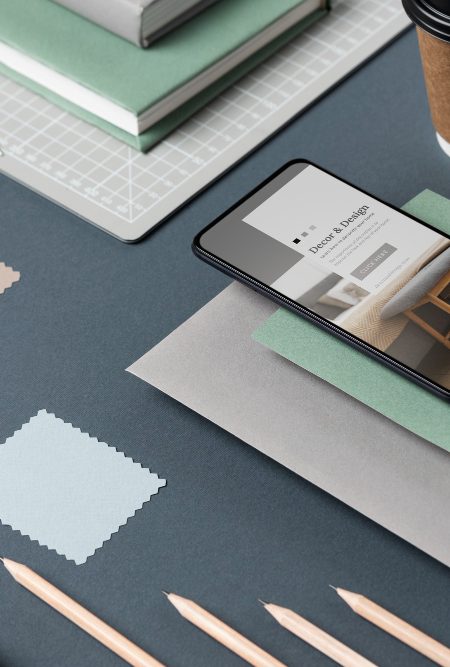Understanding the Nuanced Relationship Between UI and UX in the Critical Early Phases of Product Launch
When a new product enters the market, much attention is often placed on its appearance—the sleekness of its buttons, the vibrancy of its color palette, or the elegance of its typography. This is the realm of User Interface (UI), the visual layer that mediates the first impression. Yet, as any seasoned product team knows, an immaculate interface alone does not guarantee adoption or retention. Beneath the surface lies User Experience (UX)—the practicality, logic, and emotional flow of interactions that determine whether users stick around after those crucial first moments of discovery.
The interplay between UI and UX becomes especially pronounced during a launch stage, when perception is fragile and sentiment spreads rapidly. A product may generate excitement through a stunning, modern interface, but if underlying journeys are clunky, confusing, or slow, new users will abandon it. Equally, a product with brilliant usability but clumsy visuals risks being dismissed as outdated or unreliable before users even give it a proper chance.
The key distinction lies in recognizing UI as the aesthetic appeal, the visual handshake, while UX is the emotional experience—the memory users walk away with. Successful launches master the choreography between both. Misalignment, on the other hand, creates a gap between what users see and what they feel. And in the modern competitive landscape—where audiences are influenced not only by direct competitors but also by digital ecosystems that set universal standards of seamlessness—this gap can be fatal.
In fact, product launches unfold in an environment shaped by tech giants that have conditioned users to expect polished visuals and frictionless performance. When one element significantly outpaces the other, disappointment sets in. A highly marketed app that looks brilliant but fails to deliver smooth onboarding risks a reputation collapse within days of its debut. Conversely, an elegantly mapped workflow that is hidden behind dated controls simply lacks the visual magnetism needed to win initial downloads or sign-ups.
Thus, at the launch stage, the challenge lies not in choosing UI or UX, but in calibrating both in ways that respect their timing and impact. UI drives discovery and first impressions. UX sustains engagement and fuels retention. Without understanding this duality, even the most innovative ideas risk fizzling out.
Prioritizing User Experience Without Neglecting Interface Design at Launch
While both UI and UX matter, product teams often struggle with the question: which takes precedence at launch—functionality or presentation?
The nuanced answer is that UX holds slightly more long-term weight, especially for early adoption and sustainable growth. A dazzling interface may drive curiosity, but if usability falters, churn rates climb rapidly. Launch campaigns thrive on momentum, and negative user feedback can overshadow even the strongest visuals. In practical terms, the interface attracts the eye, but experience earns trust.
That does not mean UI can be sidelined; a poorly designed interface may prevent users from even engaging deeply enough to appreciate good UX. The product debut is a delicate moment of judgment in seconds. Clean, modern, and intuitive presentation is the gateway that allows UX to prove its worth. Teams must therefore resist the temptation to prioritize polish over flow—or flow over first impressions—and instead cultivate alignment between the two.
Strategies for Structuring Design Efforts at Launch
- Roadmap Layering Between UI & UX
Early roadmaps should prioritize core usability flows—onboarding, navigation, and key actions—before layering in more advanced UI enhancements. This ensures that at launch, even if the interface is not maximal in sophistication, the product still works smoothly and inspires confidence. After establishing that foundation, UI refinements can enhance the emotional appeal without risking functional shortcomings. - Allocating Resources Wisely
In startups or resource-constrained teams, there’s often pressure to “make it look good first.” But allocating more effort initially to UX architecture, prototyping, and user testing guarantees smoother scaling. Designers and developers should collaborate in sprint cycles, reserving bandwidth for UI fine-tuning closer to launch when visual consistency matters most for storytelling and marketing collateral. - Test Beyond Beauty
User testing should not stop at asking whether people like how the app looks. It must probe deeper: Can they accomplish their goals without confusion? Do they feel in control? Is the learning curve minimized? Gathering feedback on emotion, flow, and effort reveals more actionable weaknesses than aesthetic judgments alone. - Leverage UI for Confidence Building
While UX lays the foundation, a crisp interface signals credibility at launch. Heavy competition means that users often equate visual professionalism with legitimacy. Prospective customers may abandon a tool they suspect is “unfinished.” Thus, UI’s role at launch is to invite, reassure, and reinforce that the product is worth exploring.
The Launch Window: Balancing the High Stakes
At the moment of debut, the margin for error is razor-thin. Feedback spreads rapidly, and user sentiment can define a product’s reputation almost irreversibly. Products that focus exclusively on surface-level polish risk early attrition, while those that neglect the interface may never earn the attention necessary to demonstrate their strengths.
The optimal strategy is to prioritize UX as the structural backbone while treating UI as the gateway that amplifies that experience. When aligned, they transform curiosity into loyalty, buzz into retention. When divorced, they generate frustration and squander opportunity.
Final Thoughts
So, UI vs UX—which matters more at the product launch stage? The answer is both, but not equally. UX is the enduring substance, the element that guarantees repeat use, lower churn, and trust. UI is the spark, the magnetism that draws users in and shapes those first fragile impressions.
For product teams, the path forward lies in designing with UX-first conviction and UI-conscious execution. A launch that delights visually but frustrates experientially will burn bright and then fade. A launch that values experience while ensuring competent interface design will not only capture attention but also sustain it—a balance that separates products that merely make a splash from those that build a loyal community.
In high-stakes moments where competition is fierce and expectations are soaring, success does not come from asking UI or UX? but from answering How do we balance the two so our users feel as good as our product looks?











